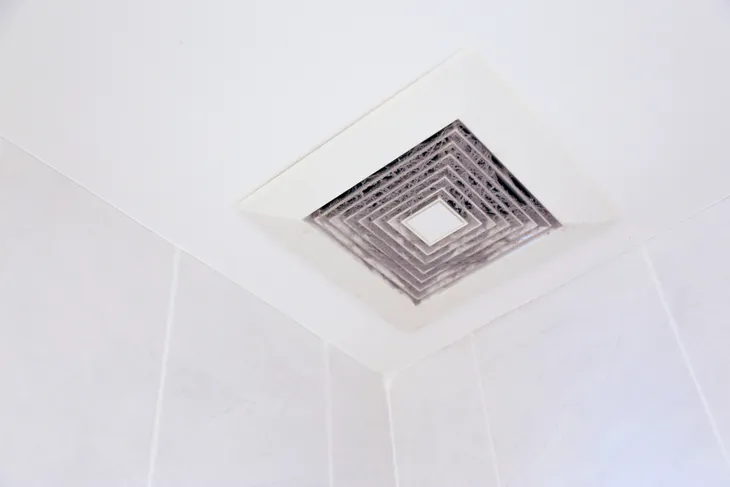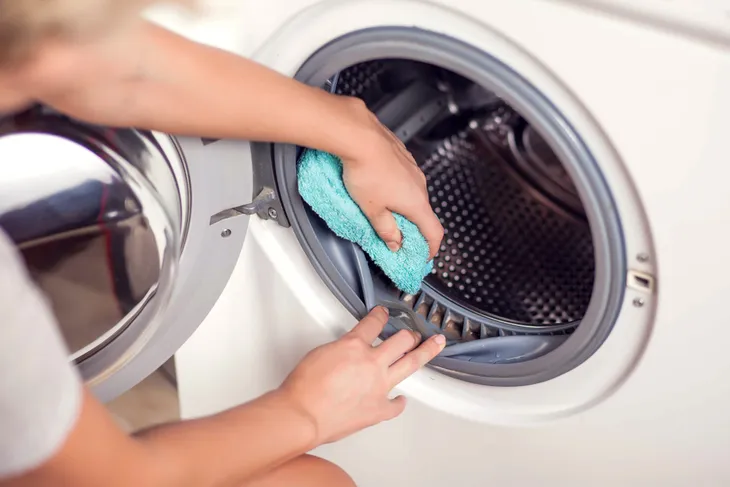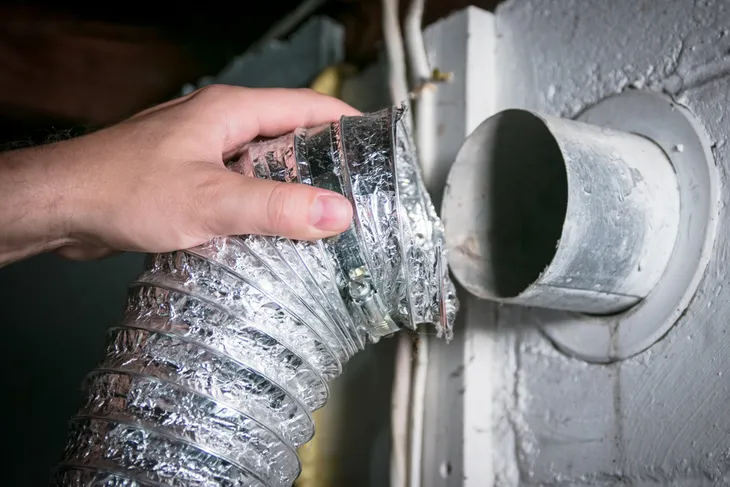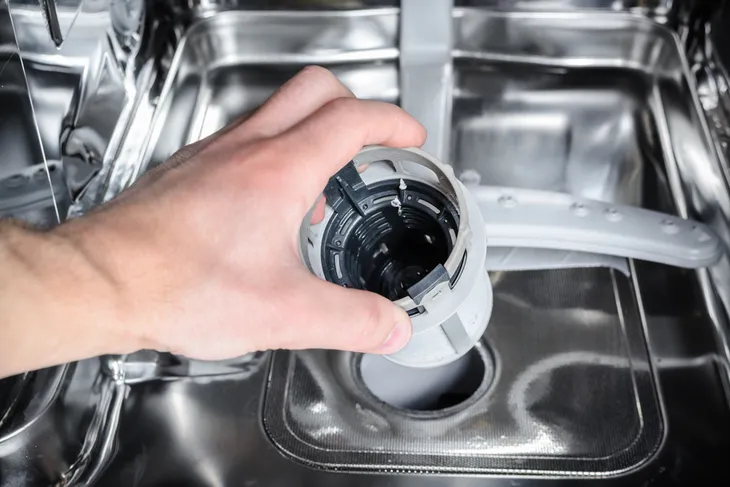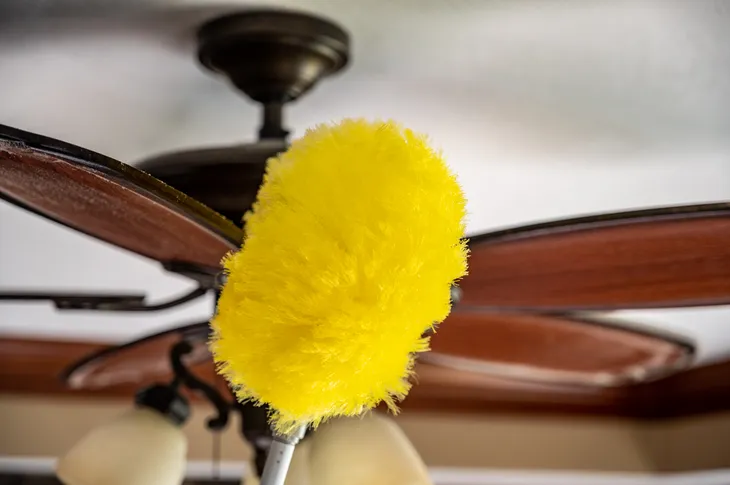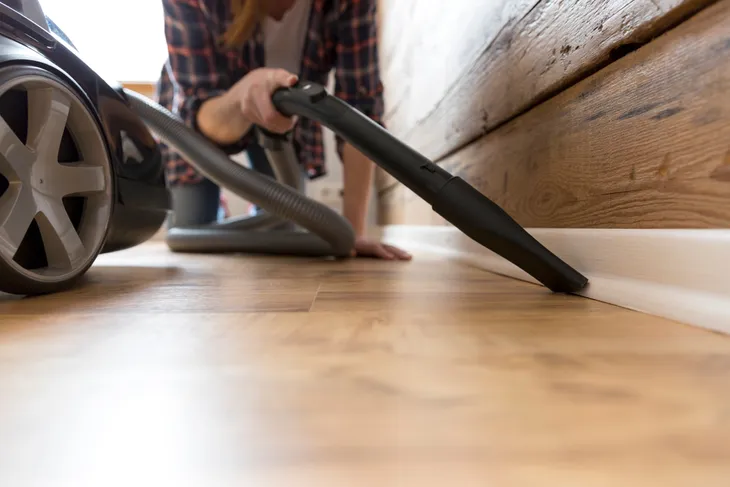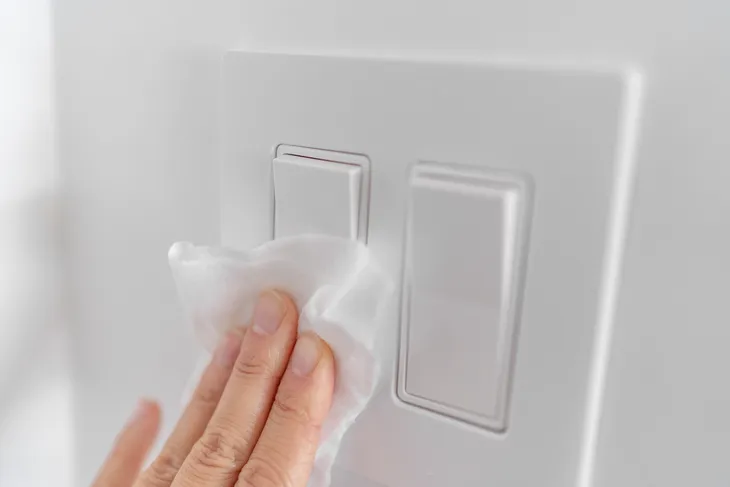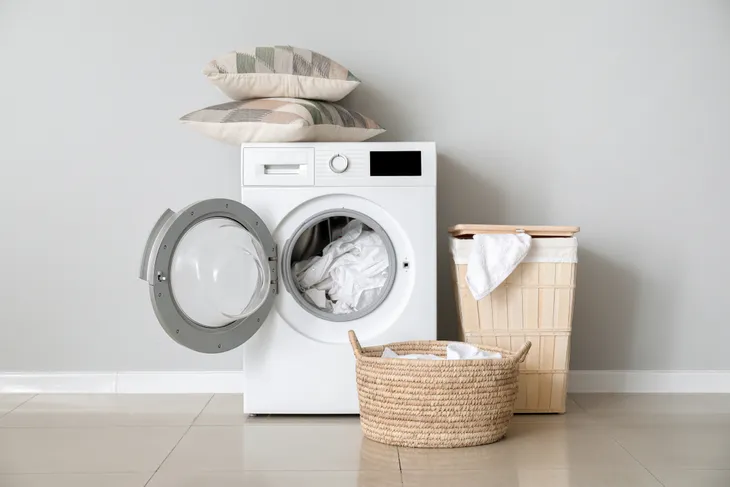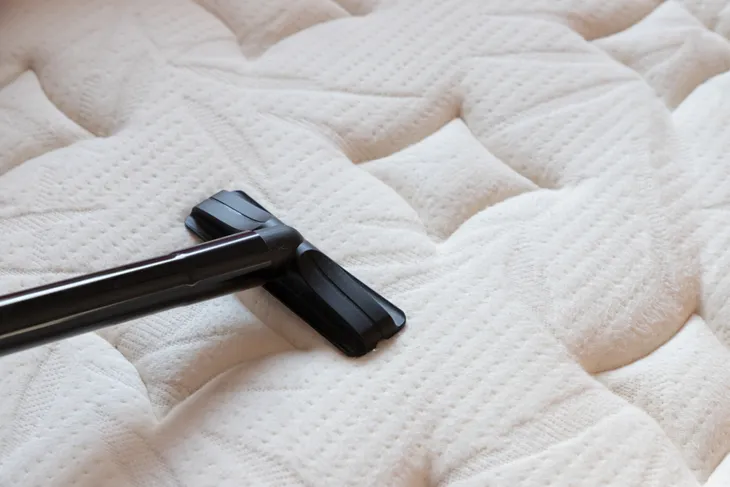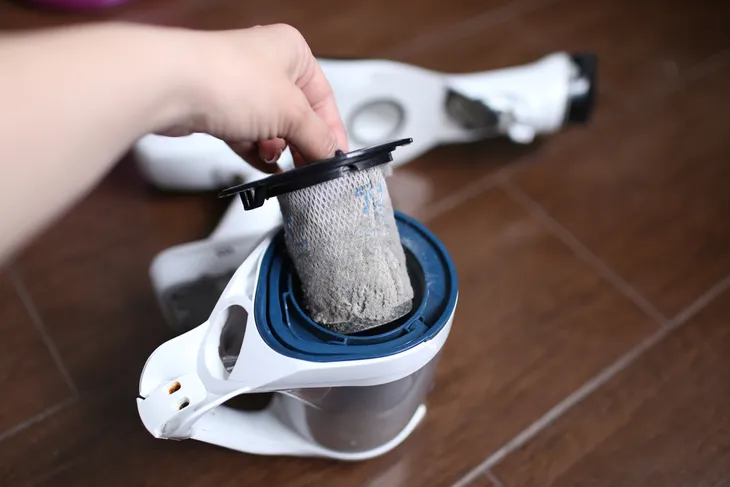- Spring cleaning is important to keep dust and grime at bay but a clean home can benefit your health too, from strengthening your immune system to decreasing stress.
- Common places people forget to clean include the washer and dryer, dishwasher, and ceiling fixtures.
- High traffic areas like door handles, light switches, and remote controls are also often forgotten about.
- Spring cleaning is a big job and it can be overwhelming so start by tackling one room each week until the job is complete.
Let’s face it, most people don’t enjoy cleaning but there’s nothing more satisfying than a sparkly, clean home. Cleaning your house weekly is important to keep dust and grime at bay but a thorough, yearly deep clean is necessary too. This allows you to reach those often forgotten about places!
It turns out spring cleaning can benefit your health too. From strengthening your immune system and preventing illness to decreasing stress. With the warmer weather around the corner, it’s the perfect time to spring clean your home. Here are 16 places you wouldn’t think to clean, that you really should!
A quick tip: if you find spring cleaning intimidating, start by tackling one room each week until your entire home is complete. This will help break up the time and make the task at hand less overwhelming.
Reusable Grocery Bags
Reusable shopping bags are a great way to cut down on single-use plastics. You can use them for general shopping and for groceries. However, how many times have you actually thrown those reusable bags in the washer? If you can’t recall it’s already overdue.
Reusable grocery bags can get grimy over time so it’s important to wash them regularly or at the very least, during your yearly deep clean. Check the label on the bag to find out if they’re machine-wash safe. If they’re not, give them a good cleaning with a wet sponge or damp cloth and allow them to air dry.
The Bath Fan
Every properly installed bathroom should have an exhaust fan that helps get rid of excess moisture, humidity, odors, and other pollutants from the bathroom. However, how many times do you actually look up to that fan? The next time you’re in the bathroom, take a look and if it’s covered in dust, it’s time to clean it!
The good news is bath fan grills are easy to clean! You simply grab the edges of the cover, squeezing the springs to release it from the slots and pull it down. Wash the cover with your favorite cleaning solution and then give the fan a wipe with a damp cloth to remove any cobwebs or dust.
The Washing Machine
The washing machine has an important job of cleaning your clothes but if your washer isn’t clean it can’t do its job effectively! If you don’t already do this regularly, at the very least you should clean your washer during your yearly spring clean.
Good Housekeeping says you can freshen it up by running a washer cleaning cycle with bleach or another washing machine cleaner. If you prefer to go the more natural route, Architectural Digest says you can use vinegar and baking soda.
Further, if you have a front load washer don’t forget to clean in and around the rubber gasket! This is a commonplace that traps hair and mildew. Finally, don’t forget to freshen up the door of the wash and the exterior of the machine. A microfiber cloth and a spritz of white vinegar should do the trick!
The Dryer and Dryer Vent
After cleaning the washing machine don’t forget to give the dryer some attention. The National Fire Protection Association says roughly 15,000 fires start in the laundry room every year, and most of them are caused by clothes dryers.
It’s important to clean the lint trap after every load, however, lint can get trapped in the vents too. Take the time to unplug your dryer, remove the vent and clean it out to dislodge excess dirt and lint. Some sources suggest using a toilet bowl brush. Next, use a vacuum to clean up lint and dust that is under, around, and behind the dryer too.
The Dishwasher
Some may think the dishwasher is self-cleaning but that couldn’t be further from the truth. Just like your washing machine, your dishwasher needs to be cleaned too. Food grime and soap scum can build up over time which can lead to nasty odors.
To clean the dishwasher you can fill a dishwasher-safe bowl with 1-cup of vinegar. Place it on the bottom of the empty dishwasher and run a hot water cycle. The vinegar should help break down food grime and residue.
The Dishwasher Filter
While you’re at it, don’t forget to clean your dishwasher filter! If this is a shock to you, don’t worry a lot of people don’t even realize their dishwasher has one, or that they need to clean it. Dishwasher filters should actually be cleaned every 6-months (or more frequently if you use the dishwasher often) but at the bare minimum make sure you clean it during your spring clean.
First, you’ll need to locate the filter. If it’s not obvious, check your owner’s manual. The manual will also tell you how to properly remove it. Many models simply require a quarter turn clockwise. To clean it, start by rinsing the filter with warm water, however, if there are stuck-on food particles let it soak in warm water for several minutes. Then, using a soft brush or sponge, gently scrub the debris. Do not use a wire brush or anything harsh as it may damage the filter. After cleaning, put it back and lock it into place before running the dishwasher.
Ceiling Fans and Light Fixtures
Just like the bathroom fan, ceiling fans and light fixtures often get forgotten about. After all, we don’t spend most of our day staring up at them. But the fact is, these are perfect places to accumulate dust.
To clean these hard-to-reach places use an extendable duster or use a ladder to get up high. If you’ve neglected cleaning these fixtures all year, you might want to start by vacuuming the dust first, then use your favorite all-purpose cleaning product.
Behind and Underneath Furniture
Be honest with yourself, how many times during the year do you actually move the furniture around to clean? If it’s not often make sure you add this to your spring cleaning list.
It’s important to move large furniture like cabinets, couches, and beds out of the way so you can vacuum underneath and behind where they’re normally placed. Don’t forget to vacuum the edges of the wall, molding, and heat registers while you’re at it!
Doors and Windows
The tops of doors and windows often get neglected too. Out of sight, out of mind, right? But be sure to add these areas to your cleaning list as they often accumulate dust and dirt.
While you’re cleaning the tops, you might as well clean the whole unit. Don’t forget the door handles too! These are high-traffic items that are often touched by many hands making them a great place for grime and germs to build up.
Phones, Remote Controls, and Light Switches
Hands are constantly touching phones, remote controls, and light switches. This makes them a breeding ground for germs, especially if they’re not cleaned regularly. In fact, Good Housekeeping says, “your cell phone probably harbors more germs than your toilet seat.” If that doesn’t make you feel grossed out, then we don’t know what will!
The source says to power down your phone then wipe it with a microfiber cloth followed by a disinfectant wipe. Allow it to air dry for 5-minutes before wiping it dry with a clean microfiber cloth again. You can use this method for your TV remote, light switches, and your computer mouse and keyboard.
Pet Toys and Bedding
As the season’s change, your pet may experience a spring shed which means there might be a lot more fur lying around. All the more reason to give their bedding and toys a good clean.
Give their bed a good vacuum to pick up any loose fur. If it’s machine washable, toss it in the washing machine along with any other machine-washable toys. For hard plastic toys, toss them in the sink or bath to clean them all at once or wipe each one down individually with a disinfectant wipe. Although, we highly recommend the former!
Kids Toys
While you’re cleaning your pet’s toys, don’t forget about your children’s toys too! Good Housekeeping says a quick hack is to toss plastic (non-battery operated) toys in the dishwasher. The source says select crystal or quick cycle when cleaning the toys and skip the heated dry. Alternatively, you could individually wipe down each toy with a disinfectant wipe, or toss them in the bath and soak them in a solution of water and your favorite cleaning product.
Softer toys like stuffed animals can typically go in the washing machine. Just be sure to check the care tag first. If it’s safe to do so, place them in a mesh bag or pillowcase, and put them in the washing machine on a gentle cycle. Don’t forget to wipe down the bins that store all the toys too!
The Walls
Another important area to clean that you may not think of is your walls. Not only can cleaning your walls help improve their appearance by making them seem brighter, but it can also cut down on the dust that can aggravate allergy and asthma sufferers. Cleaning the walls will also remove dirt, grime, and germs.
Home Depot recommends removing any items from the walls and moving furniture out of the way. First, dust the walls with a tack cloth or cheesecloth and then wash the walls. The source says mild soapy water and a soft cleaning sponge will do the trick. Avoid colored soaps or dyed sponges to avoid stains, and always test a small area first to ensure the soap doesn’t damage the paint.
Pillows and Bedding
While you may wash your sheets regularly, people typically avoid bulkier items like pillows and comforters. But the fact is, these items should really be washed at least every 6-months but preferably every 3-months.
First, read the label for cleaning instructions. Martha Stewart says most pillows such as those filled with cotton, feather, and fiberfill can be cleaned in the washing machine using warm water on a gentle cycle.
If you have a foam pillow, the source says you shouldn’t put it in the washing machine as the agitation may break up the padding. Instead, you can remove the cover, clean it according to the label, and then clean the foam using your vacuum. Similar to how you’d clean a mattress, which we’ll explain next!
Mattresses
While your sheets are getting clean in the washing machine, it’s time to give your mattress a little TLC! Cleaning your mattress is easier to do than you might think too. Start by using the upholstery and crevice tools that come with your vacuum. These tools can help you clean the top and sides of the mattress.
It’s also a good idea to disinfect the mattress too. Good Housekeeping says you can do this by spraying a disinfectant spray, such as Lysol on the mattress. However, the source notes that a garment steamer or iron will work too to destroy dust mites near the surface. After spraying the mattress, vacuum it again.
Finally, if you don’t have one already, invest in a mattress protector. While the cover won’t diminish the need to clean the mattress entirely, it will protect your mattress from accidental spills, bacteria, and some allergens.
The Vacuum and Broom
After spring cleaning your home, it’s time to clean your tools. The vacuum and broom are two items we quickly put away but the reality is they need a little TLC too.
To clean the broom, start by removing any clumps of dust and then use the vacuum hose to pick up any other loose dirt and dust. Next, wash the broom head in warm soapy water. To clean your vacuum, replace the bag (if it has one), clean or replace the filters, and remove any hair or threads that are caught in the vacuum brush.


